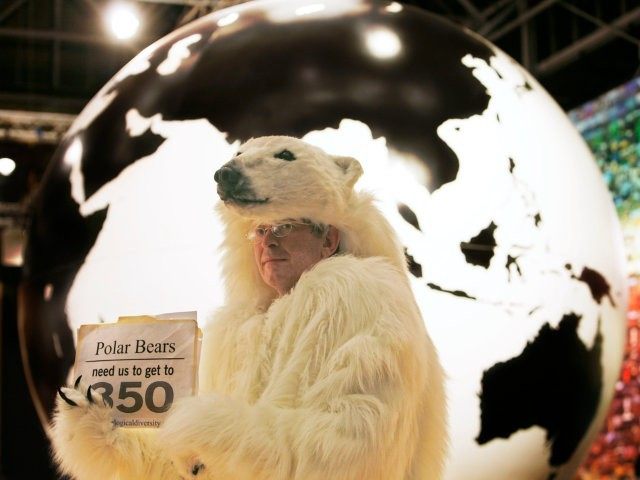Scientists have discovered a hitherto unknown cooling process which may pose a serious threat to man-made global warming theory.
According to a study by the Institute of Catalysis and Environment in Lyon (IRCELYON, CNRS / University Lyon 1) and the Leibniz Institute for Tropospheric Research (TROPOS), the oceans are producing unexpectedly large quantities of isoprene – a volatile organic compound (VOC) – which is known to have a cooling effect on climate.
Isoprene is a gas that is formed by both the vegetation and the oceans. It is very important for the climate because this gas can form particles that can become clouds and then later affect temperature and precipitation. Previously it was assumed that isoprene is primarily caused by biological processes from plankton in the sea water. The atmospheric chemists from France and Germany, however, could now show that isoprene could also be formed without biological sources in surface film of the oceans by sunlight and so explain the large discrepancy between field measurements and models. The new identified photochemical reaction is therefore important to improve the climate models.
The oceans not only take up heat and carbon dioxide from the atmosphere, they are also sources of various gaseous compounds, thereby affecting the global climate. A key role is played by the so-called surface microlayer (SML), especially at low wind speed. In these few micrometers thin layer different organic substances such as dissolved organic matter, fat and amino acids, proteins, lipids are accumulating as well as trace metals, dust and microorganisms.
Though the cooling effects of isoprene are well known, what is new is the discovery that the oceans are producing much more of it than has been accounted for in the alarmists’ climate models. (H/T Lewis Page; The Register)
The computer models assume that the total quantity of isoprene produced by trees, plants and plankton amounts to 1.9 megatons per year. But what researchers have discovered is a process whereby isoprene is also produced in far greater quantities abiotically (ie not from plant or animal life) from the action of sunlight on chemicals in the ocean, possibly as much as 3.5 megatons more per year.
“We were able for the first time trace back the production of this important aerosol precursor to abiotic sources, so far global calculations consider only biological sources,” explains Dr. Christian George from IRCELYON.
Thus, it is now possible to estimate more closely the total amounts of isoprene, which are emitted. So far, however, local measurements indicated levels of about 0.3 megatonnes per year, global simulations of around 1.9 megatons per year. But the team of Lyon and Leipzig estimates that the newly discovered photochemical pathway alone contribute 0.2 to 3.5 megatons per year additionally and could explain the recent disagreements. “The existence of the organic films at the ocean surface due to biological activities therefore influences the exchange processes between air and sea in a unexpected strong way. The photochemical processes at this interface could be a very significant source of isoprene”, summarizes Prof. Hartmut Herrmann from TROPOS.
Climate skeptics have, of course, long argued that the models used by alarmists to predict future climate change are fatally flawed because they exaggerate the influence of man-made carbon dioxide and fail to take into account other unknown or ill-understood factors.
This discovery presents further proof that the skeptics are right: the reason that all that predicted “global warming” has failed to materialize is that it has been countered by the planet’s natural cooling effects.
“Here is more evidence of what we have known for some time: that climate models simply do not mirror the reality of a chaotic system – and that they should never have been trusted in the first place,” says Dr Benny Peiser, director of the Global Warming Policy Foundation.
The news could scarcely have come at a worse time for the global climate alarmist community which has been ramping up the scaremongering message in the run up to the latest round of UN climate talks in Paris this December.
Everyone from the Pope to the Prince of Wales to the Governor of the Bank of England has been roped into pushing the UN’s alarmist agenda.
What this new study shows is that in the unlikely event of any agreement being reached on “climate change” by world leaders in Paris, it will do so in defiance of “the Science” and not because of it.

COMMENTS
Please let us know if you're having issues with commenting.